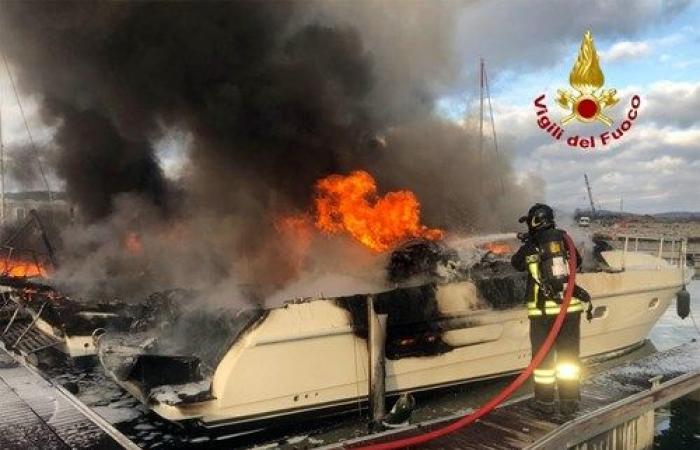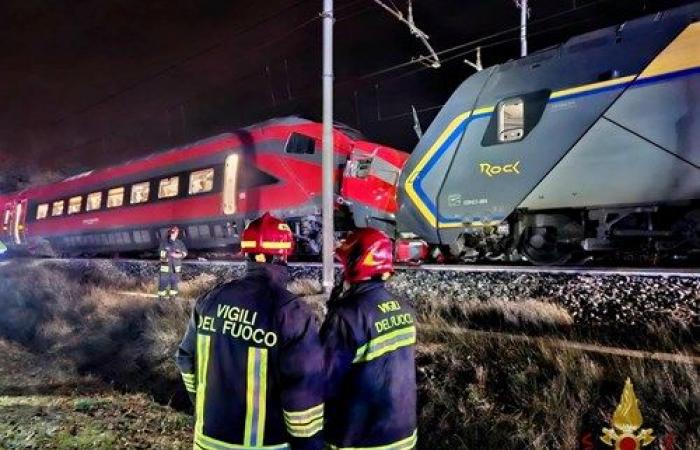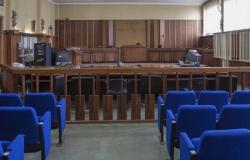The Department of Fire Brigade, Public Rescue and Civil Defence, in which the National Fire Brigade is based, is directed by a Department Head, and has exclusive competences in the field of prevention, public rescue and fighting fires. , both competing with the Department of the Presidency of the Council of Ministers of the same name in matters of defense and civil protection. In an interview withOpinionthe prefect Renato Franceschelli talks about the organization of tasks, skills and the role played in prevention.
Prefect Franceschelli, in the matter of prevention and extinguishing of forest fires, other central and local bodies intervene in the planning phase, such as the Department of Civil Protection (which is responsible for remodulating the deployment of air vehicles of the state fleet), and the Regions, required to formulate and update three-year regional/provincial plans ad hoc. What is the role of the Department in the aforementioned integrated system?
The Fire Brigade Department carries out support functions for regional coordination and the operations rooms of local commands, modulating its interventions in such a way as to involve other Authorities (compared to those mentioned), depending on the levels of logistical-functional complexity and breadth territory within which the operations take place. Just as happens when all the subjects involved come together at a common table, close to the summer season, in which the risks of forest fires, especially of an arson nature, significantly increase. Very often the causes of fires are found in the lack of cleanliness of the area and in the shortage of specialized personnel to be used for surveillance activities. on site, often entrusted for the easier part to groups of volunteers for the protection of environmental, wildlife and hunting sites. And, in containing fires, the union ordinances of local authorities are not enough to enforce the limits imposed on farmers in eliminating stubble.
In some ways, from the point of view of prevention, the new reorganization of the Forestry Corps, now classified as a specialty in the Carabinieri, is affected. The great advantage of this classification is the capillarity of their presence on the territory, thanks to the approximately 3 thousand provincial stations of the Army, which however corresponds to a lower vocation towards the same forestry specialization. The firefighting activities are now strengthened by the entry into service of the new helicopters supplied to the Fire Brigade, which transport significant volumes of water for their much more punctual release on fires, compared to the similar actions of the Canadair which operate at greater heights and disperse your load in a wider radius.
Where necessary, the Department intervenes as an aeronautical authority to support firefighting operations both in Italy and abroad (see recent interventions in Spain and Greece). In the latter case, action is taken with the authorization of the Brussels structure, which coordinates the rapid intervention of its Canadairs purchased for the member states (Italy has received two), liaising with the national civil protection systems. Furthermore, following the disastrous earthquakes that recently occurred in February 2023 in Turkey, it was possible to send a specialized contingent of Italian firefighters to Ankara (in this case, under the auspices of the UN) for the recovery activities of the survivors in the buildings collapsed, removal of rubble and assistance in relief efforts for the Turkish state. At an international level, the organization of the Department and the various aspects of fire brigade training are the subject of great interest from third countries (see Saudi Arabia and North African countries), in which the related fire-fighting activities are generally included in the item ” civil defence”.
Still in reference to forest fires, responsible over time for a very serious impoverishment and loss of vast green areas of the national territory, how much more needs to be invested in strengthening digital satellite surveillance? Does the Fire Department have full access to this type of data?
I would say that there is no problem regarding access to data, given that it is precisely the Prefectures that coordinate the rescue efforts with the regional Civil Protection offices, for the purposes of activating satellite maps within the Rescue Coordination Centers . Obviously, there are technical times to be respected for the activation of the rescue, as happened in the recent case of the Romanian boys overwhelmed by the flood of the Natisone torrent, given that the fire brigade rescue helicopter had to leave from the Venice base. As is known, requests for help are routed collectively to the unified number of “112”, and it is then up to the center to route them to the type of operators most suitable for the intervention.
The second fundamental theme concerns the instability of the territory and, in particular, the increasingly frequent flood disasters, caused by the lack of regulation and control of rivers and streams. Here too, how does the Department form a system with the various central and ministerial organizational structures, and what are the bugs (weak points) in the relative coordination of interventions? And what is the current picture of the Department’s instrumental equipment and staff? Within the Pnrr, are there forecasts and projects for the logistical and instrumental strengthening of the stations and operational centers, including those of the Fire Brigade? How to strengthen GPS satellite warning and rapid intervention systems for aircraft?
For the defense of the territory we are talking about a rather complex administrative system, with important actors coming into play, such as the Civil Engineering and the regional and local basin authorities, which are often hybrid public/private bodies. The planning of the works is affected by the long times of the financial project and the launch of the related tenders, often fragmented across multiple territorially competent subjects. Today, for example, the phenomenon of the so-called “water bombs” is no longer an episodic or exceptional event, as it is affected by the effects of ongoing climate change. A close synergy between the State and local authorities is increasingly needed. I don’t see major organizational problems for the joint rescue and removal operations of the populations affected by the floods, as the rescue system, which involves a plurality of perfectly trained actors, appears on average to be well established and functioning. The difficulty may come from the vastness of the territory involved. Here too, there are excellences at the regional level of civil protection, as happens in Veneto and Liguria, where the good coordination of relief efforts is combined with the circularity of information available in real time, combined with other cases of greater stickiness and dysfunctionality of interventions. However, under the plan of prevention and implementation of interventions to prevent the risk of landslides, such as the correct maintenance of roads and embankments of watercourses, the relative competence remains of an exclusively local nature, and there are no subrogation powers of the Status for non-compliant entities. At a central level, therefore, the task remains that of keeping the system well alerted and having adequately trained personnel available to cover the different types of emergencies.
As regards equipment, the current staff plan includes 40 thousand units. So, when we refer to a staffing shortage, what do we mean? For work and daily activities (which correspond to thousands of daily interventions in the area) there are no problems. Instead, a real one gap it is recorded about turnover, for the time required to replace retiring workers. Let’s take an example: if today I needed 350 units, after having evaluated the framework of the organic shortages that will accrue within the current year of management, and taking into account the budget constraints, for which only in the final balance the Ministry of Economy authorizes the replacement of the outgoing ones, I would have to wait at least two years before seeing them enter service, due to the unavoidable technical times of carrying out the competition and the training period of the winners/suitable candidates. This situation applies in general to all public administration and other police forces.
Now, taking into account that a tanker cannot go out to provide assistance with less than 5 people on board, what the Department can do at a central level is to guarantee “homogeneous” organic coverage, given that, as mentioned, there is a gap of time from when the actual deficiencies of the stations are recorded until their definitive coverage, and it must be taken into account, as always, that there are more desirable locations and others less so. Regarding the last part of the question, great attention is paid by the Department to the renewal of the considerable and sophisticated fleet of vehicles, which requires medium/long-term planning. Pnrr resources were mainly used for the purchase by 2026 of approximately 3,800, the smallest of which are entirely electrified, or use green fuels, such as biomethane and biodiesel. Instead, from the point of view of the planning and construction of new fire stations, the responsibility lies with the State Property Office and the Public Works Supervision, which finance the works from ministerial funds. While, however, it is possible to draw on the Pnrr regarding the installation of charging stations for electric vehicles at stations, to be used over “short” distances, for obvious reasons of autonomy.

One gets the impression that, starting from the 1980s, theamputation of the Civil Protection from the direct responsibilities of the Ministry of the Interior has, in some way, separated the “arms and legs” (Fire Brigade and Law Enforcement) from the “head” and, above all, from the most significant part which concerns the ordinance powers. What is your vision on the matter?
In my specific case, since I was born “administratively” into the new system, it is impossible for me to make comparisons with the pre-1980s situation. I can only say that, since then, the Fire Brigade Department has represented the most effective and technically prepared, and therefore irreplaceable, operational arm of the entire civil protection and defense system, today the responsibility of other central, regional and local actors. It is true that, from a ministerial point of view, there are no longer the powers of Civil Protection ordinance, without prejudice to the vicarial role of the Head of Department in the Italy Situation Room, in which all major civil relief operations for the affected populations are centrally coordinated from natural disasters. Certainly, the new system puts the Regions in competition with each other, which in some cases tend to become “all-doing”, in matters of civil protection, even if the competences of the State and, above all, the prerogative of the Department which carries out general staff functions for general planning.
In this regard, it is necessary to consider the precious coordination role played by the Prefects, to assist the territories in matters of civil protection. In fact, it is not certain that local actors have adequate structures and equipment for rescue purposes, so it is necessary to resort very often to the support function of the Fire Brigade at all levels. As regards, then, the safety plans for public entertainment activities (of particular importance in the “nightlife” areas) with more than 5 thousand presences, the related safety/security are subjected to the approval of the provincial public entertainment commissions, in which the technical component of the fire brigade plays a significant role.
Updated June 19, 2024 at 10:59 am







